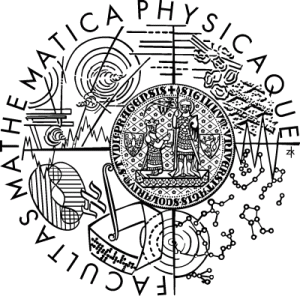
|
Rupert Klein
Institut für Mathematik
Freie Universität Berlin
Arnimallee 6
14195 Berlin
Germany
|
|
| Asymptotic modelling of multiscale processes in the atmosphere |
|
Earth's atmosphere hosts a rich spectrum of phenomena that involve
interactions of a variety of processes across many length and time
scales. A systematic approach to analyzing these scale dependent
processes is a core task of theoretical meteorology and a prerequisite to constructing reliable computational models for weather
forecasting and climate simulation.
Lecture I: The fundamental tools of similarity theory and formal single scale asymptotics will allow us to systematize the large zoo of scale-dependent model equations that one finds in modern textbooks of theoretical meteorology.
Lecture II: The meteorological analogue of the incompressible flow equations are the "anelastic" and "pseudo-incompressible" models. Here we will learn how the presence of internal gravity waves in the atmosphere implies an asymptotic three-scale problem that renders the formal derivation and justification of these models much more intricate than the classical low Mach number derivation of the incompressible flow equations.
Lecture III: The mechanisms by which tropical storms develop into hurricanes and typhoons are still under intense debate despite decades of research. A recent theory for the dynamics of strongly tilted atmospheric vortices will show how asymptotic methods help structuring this scientific debate, and how they offer new angles of scientific attack on the problem.
Lecture IV: This last lecture will summarize some ramifications of the scaling regimes and scaling theories considered in Lectures I-III on the construction of reliable computational methods.
|
 |
Natasa Pavlovic
Department of Mathematics
The University of Texas at Austin
2515 Speedway, RLM 12.162
Austin, Texas 78712
USA
|
|
| Back and forth from quantum many particle systems to nonlinear PDE, and applications to kinetic equations |
|
Analysis of large systems of interacting particles is a key for predicting and understanding various phenomena arising in different contexts, from physics (in understanding e.g. boson stars) to social studies (when modeling social networks). Since the number of particles is usually very large one would like to understand qualitative and quantitative properties of such systems of particles through some macroscopic, averaged characte-ristics. In order to identify macroscopic behavior of multi-particle systems, it is helpful to study the asymptotic behavior when the number of particles approaches infinity, with the hope that the limit will approximate properties observed in the systems with a large finite number of particles. An example of an important phenomenon that describes such macroscopic behavior of a large system of particles is the Bose-Einstein condensation. Mathematical models have been developed to understand such phenomena. Those models connect large quantum systems of interacting particles and nonlinear PDE that are d erived from such systems in the limit of the number of particles going to infinity. In this mini-course we will focus on developments that connect a quantum many particle system of bosons and the nonlinear Schrodinger equation, and will apply some of the ideas appearing in this context to a new program of studying well-posedness of Boltzmann equation, which describes the evolution of the probability density of independent identically distributed particles modeling a rarefied gas with predominantly binary elastic interactions.
|
 |
Vlad Vicol
Courant Institute of Mathematical Sciences
New York University
251 Mercer St
New York, NY 10012
USA
|
|
| Intermittent weak solutions of the Navier-Stokes equations |
|
In this series of lectures, we discuss the construction of weak solutions to the Navier-Stokes equations which have an intermittent singular behaviour. These weak solutions have bounded kinetic energy, possess a limited degree of regularity, and they behave badly on a "thin" set in space-time. In particular, the Lp norms of these solutions vary greatly with p. The construction combines the ideas of convex-integration, as developed in the context of hydrodynamic models by De Lellis and Szekelihidi, with the concept of intermittent Beltrami blocks, introduced in joint works with Buckmaster.
|
 |
Emil Wiedemann
Institut für Angewandte Analysis
Universität Ulm
Helmholtzstraße 18
89081 Ulm
Germany
|
|
| Conserved quantities and regularity in fluid dynamics |
|
Conserved or dissipated quantities, like energy or entropy, are at the heart of the study of many classes of time-dependent PDEs in connection
with fluid mechanics. This is the case, for instance, for the Euler and Navier-Stokes equations, for systems of conservation laws, and for
transport equations. In all these cases, a formally conserved quantity may no longer be constant in time for a weak solution at low regularity. The
delicate interplay between regularity and conservation of the respective quantity relates to renormalisation in the DiPerna-Lions theory of
transport and continuity equations, and to Onsager's Conjecture in the realm of ideal incompressible fluids. We will review the classical
commutator methods of DiPerna-Lions and Constantin-E-Titi, and then proceed to more recent results, possibly including an introduction to the
technique of convex integration.
|












